PHYSICS
Paper 3 Extended
0625/03
May/June 2006
1 hour 15 minutes
Candidates answer on the Question Paper.
No Additional Materials are required.
READ THESE INSTRUCTIONS FIRST
Write your Centre number, candidate number and name on all the work you
hand in.
Write in dark blue or black pen.
You may use a soft pencil for any diagrams, graphs or rough working.
Do not use staples, paper clips, highlighters, glue or correction fluid.
Answer all questions.
You may lose marks if you do not show your working or if you do not use
appropriate units.
Take the weight of 1 kg to be 10 N (i.e. acceleration of free fall = 10 m/s2).
DO NOT WRITE IN THE BARCODE.
DO NOT WRITE IN THE GREY AREAS BETWEEN THE PAGES.
At the end of the examination, fasten all your work securely together.
The number of marks is given in brackets [ ] at the end of each question or
part question.
For Examiner’s Use
1
2
3
4
5
6
7
8
9
10
11
Total
2
0625/03/M/J/06
For
Examiner’s
Use
© UCLES 2006
1 A bus travels from one bus stop to the next. The journey has three distinct parts. Stated in
order they are
uniform acceleration from rest for 8.0 s,
uniform speed for 12 s,
non-uniform deceleration for 5.0 s.
Fig. 1.1 shows only the deceleration of the bus.
5
0
10
1 5
0 5 10 15 20 25
speed
m/s
time/s
Fig. 1.1
(a) On Fig. 1.1, complete the graph to show the first two parts of the journey. [3]
(b) Calculate the acceleration of the bus 4.0 s after leaving the first bus stop.
acceleration = ........................[2]
(c) Use the graph to estimate the distance the bus travels between 20 s and 25 s.
estimated distance = ........................[2]
(d) On leaving the second bus stop, the uniform acceleration of the bus is 1.2 m / s2. The
mass of the bus and passengers is 4000 kg.
Calculate the accelerating force that acts on the bus.
force = ........................[2]
(e) The acceleration of the bus from the second bus stop is less than that from the first bus
stop.
Suggest two reasons for this.
1. .....................................................................................................................................
.........................................................................................................................................
2. .....................................................................................................................................
.....................................................................................................................................[2]
3
0625/03/M/J/06 [Turn over
For
Examiner’s
Use
© UCLES 2006
2 A student sets up the apparatus shown in Fig. 2.1 in order to find the resultant of the two
tensions T1 and T2 acting at P. When the tensions T1, T2 and T3 are balanced, the angles
between T1 and the vertical and T2 and the vertical are as marked on Fig. 2.1.
vertical
board
pulley
pulley
69°
44°
P
T1 = 6.0 N T2 = 8.0 N
T3
Fig. 2.1
In the space below, draw a scale diagram of the forces T1 and T2. Use the diagram to find the
resultant of the two forces.
State
(a) the scale used, scale = ........................................
(b) the value of the resultant, value = ........................................
(c) the direction of the resultant. direction = ........................................
[6]
4
0625/03/M/J/06
For
Examiner’s
Use
© UCLES 2006
3 An electric pump is used to raise water from a well, as shown in Fig. 3.1.
pump
ground
well
Fig. 3.1
(a) The pump does work in raising the water. State an equation that could be used to
calculate the work done in raising the water.
.....................................................................................................................................[2]
(b) The water is raised through a vertical distance of 8.0 m. The weight of water raised in
5.0 s is 100 N.
(i) Calculate the work done in raising the water in this time.
work done = .......................[1]
(ii) Calculate the power the pump uses to raise the water.
power = ........................[1]
(iii) The energy transferred by the pump to the water is greater than your answer to (i).
Suggest what the additional energy is used for.
..............................................................................................................................[1]
5
0625/03/M/J/06 [Turn over
For
Examiner’s
Use
© UCLES 2006
4 (a) State two differences between evaporation of water and boiling of water.
1. .....................................................................................................................................
2. .................................................................................................................................[2]
(b) The specific latent heat of vaporisation of water is 2260 kJ / kg.
Explain why this energy is needed to bo
skip to main |
skip to sidebar
Get the latest free guess papers of class 8th, 9th, 10th, FA, FSC, BA, BSC, MA, MSC, MCOM, BCOM, MIT, PGD-It, and Other Classes of Punjab University and Others Colleges and Boards of Pakistan India and Bangladesh
MORE GUESSPAPERS and NOTES
197 MUSIC
221 BIOTECHOLOGY (878)
A level Latin
A-level ACCOUNTING 0452/01 Paper 1 Multiple Choice May/June 2009
A-level FIRST LANGUAGE CHINESE 0509/02
A-level Pakistan Studies 2006
A-level PHYSICS Paper 3 Extended 0625/03
BA Economics
BCOM PART 2 ADVANCED ACOUNTING
BCOM PART 2 BCRW
BCOM PART 2 BUSINESS LAW
BCOM PART-2 AUIDITING
BCOM-II Economics
BCOM-PART 2 BUSINESS TAXTATION
BCOM-PART 2 COST ACCOUNTING
BIOTECHOLOGY (878)
CA Foundation Course GDP n GNP
CA Free Markete Economy
CA important questions
CA Notes Scarcity and Choice
CA Notes UNIT 3.1 NATIONAL INCOME
CA Notes UNIT 3.2 GOVERNMENT AND THE ECONOMY
CA Notes UNIT 3.3 FISCAL POLICY
CA Notes UNIT 3.4 MONEY MONETARY POLICY
CA Notes UNIT 3.5 CAPITAL
CA Notes UNIT 3.6 INTERNATIONAL TRADE
CA Solved Assignments
CBSE Science - Chap 1 - Crop Production And Management - Page 13 - Q 1
CBSE Syllabus Class 9 - English (Communicative )
CBSE Syllabus of English Language And Literature for Class 9th For March 2009 Examination ENGLISH - LANGUAGE AND LITERATURE (Code No. 184)
CBSE Syllabus of Mathematics for Class 9th For March 2009 Examination Course Structure Class IX | Mathematics
CBSE Syllabus of Science And Technology for Class 9th For March 2009 Examination COURSE STRUCTURE CLASS IX | SCIENCE (THEORY)
CBSE Syllabus of Social Science for Class 9th For March 2009 Examination COURSE STRUCTURE Social Science | CLASS IX
Class X BIOLOGY GUESS QUESTIONS FOR SSC
Class X SOCIAL PAPER 1 GUESS QUESTIONS - - - - -
Class X Social Studies Question Paper
COMPUTER SCIECE (868)
COST AND REVENUE
Economics Solved Assignments
ELECTRICITY A D ELECTRO ICS (866)
Empirical and Molecular Formulas
EVIROMETAL SCIECE (877)
FASHIO DESIGIG (865)
GEOMETRICAL AD MECHAICAL DRAWIG (869)
Guess Paper – 2010 Class – X Subject –Chemistry (Equations)
Guess Paper – 2010 Class – X Subject – English Paper - I
IMPORTANT QUESTION CA
INDIAN CERTIFICATE OF SECONDARY EDUCATION EXAMINATION
INDIAN SCHOOL CERTIFICATE EXAMINATION
ISC MODEL EXAMII\ATION 2OTO CLASS XII MATHEMATICS
LATIN 0480/02 Paper 2 Literature May/June 2009
LITERATURE IN ENGLISH 2010/01
Managerial Economics Notes UNIT 3.1 THE SCOPE OF MANAGERIAL ECONOMICS
Managerial Economics Notes UNIT 3.2 RISK ANALYSIS RISK AND UNCERTAINTY IN MANAGERIAL DECISION MAKING
MARCH 2010
MARK SCHEME for the May/June 2008 question paper 2059 PAKISTAN STUDIES
MCOM Notes UNIT 1 DEFINITION AND BASIC CONCEPTS
MCOM Notes UNIT 1.5 PRODUCER BEHAVIOUR
MCOM Notes UNIT 1.6 THEORY OF THE FIRM
MCOM Notes UNIT 2.1 NATIONAL INCOME
MCOM Notes UNIT 2.2 INFLATION AND BUSINESS CYCLE
MCOM Notes UNIT 2.3 BALANCE OF PAYMENT AND EXCHANGE RATES
MCOM Notes UNIT 2.4 MONEY AND BANKING
Model Question Paper B.A. (Hons.) English Entrance Test
MS 01 Management Functions and Behaviour
MS 02 Management of Human Resources
MS 06 Marketing For Managers
MS-05 Management of Machines and Materials
O-level ACCOUNTING 0452/01 Paper 1 Multiple Choice May/June 2009
Pak Studies Ch 8 Chapter Name: Industry of Pakistan.
Paper BA Economics B
PHYSICAL EDUCATIO (875)

